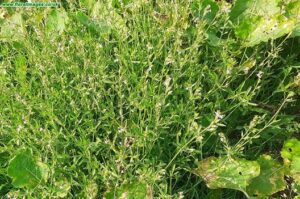2023 County Report for Breconshire
John Crellin and Mike Porter
Brecknock Botany Group made 7400 records in the year over 20 meetings plus many more recording trips by members.
The Adoxa recording challenge continues and new challenges have been added, eg to record Churchyard Yews and to access unrecorded monads (which tends to be more about access than botany).
We also participated in two BIS (the local LERC) recording days as well as helping record for the Elan Valley Project and recording the fields of the newly-formed Black Mountains College where we found a good population of Ophioglossum vulgatum (Adder’s Tongue - not often seen in the county these days). There were also two New Year Plant Hunts and three indoor over-winter meetings.
Links with the Cambrian Mountain Society resulted in the recording of several rarely updated species in the remote Llyn Carw (pictured) as part of one of their excursions.
The year’s stand out record, however, came from iRecord. Our one small (and somewhat struggling) population of Circaea alpina (Alpine Enchanter's Nightshade) is now joined by a substantial and healthy population found by Sam Thomas while visiting the (also very rare) population of Sorbus stenophylla near Capel y Ffin in the Llanthony valley.
In torrential rain he decided to cut straight down the steep slope to escape the rain as quickly as possible finding the Circaea on the way down. It was in a very inaccessible location so not that surprising that it hadn't been found before.
Work on the first Flora of Brecknockshire continues with Mike writing and John typing up and managing the data and maps.



